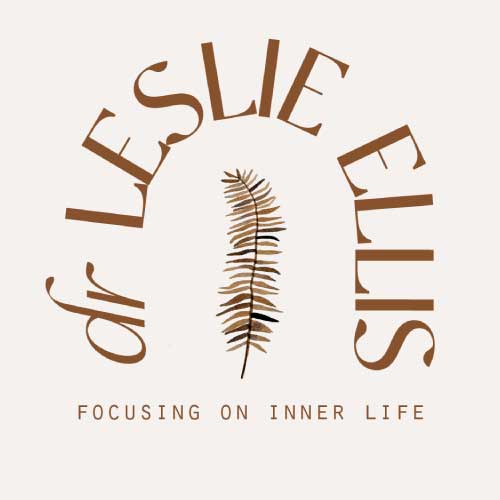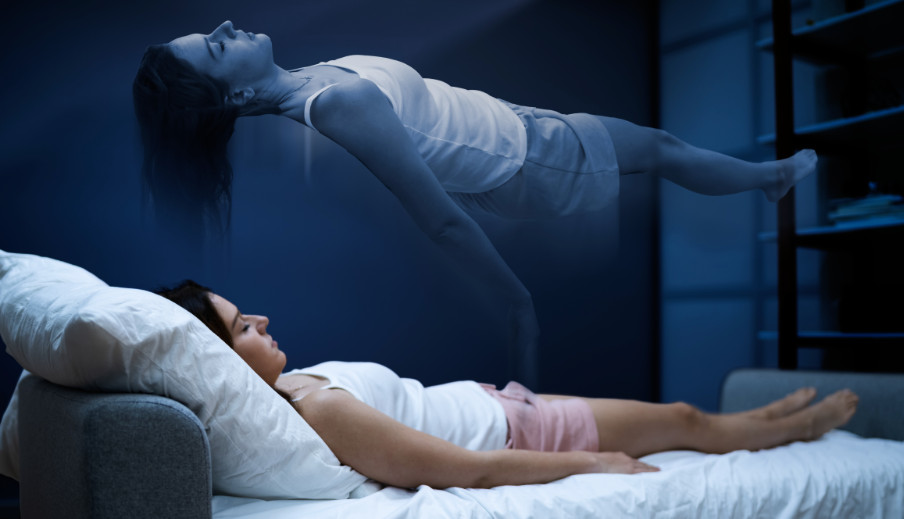A first encounter with sleep paralysis (SP) is usually terrifying. But for those who experience it often and learn to stay calm, it can be entryway to lucid dreaming and extraordinary states.
Ryan Hurd, a sleep paralysis expert, has experienced hundreds of episodes himself and offers a road map for those who experience it. The following is a summary of his book, Sleep Paralysis, A Guide to Hynagogic Visions & Visitors of the Night.
In Hurd’s initial encounter with SP at age 14, all he wanted to do was wake up from the nightmare: first a ring, then a menacing voice that said, ‘Darkness rules!’ A pervasive felt sense of evil. The strong feeling of being pushed down forcibly into sleep. He was left feeling crazy, haunted and reticent to talk about his experience. It was classic a SP episode, and it deeply influenced the course of his life. He later became both a dream researcher, lecturer and lifelong lucid dreamer.
Symptoms of Sleep Paralysis
Hurd said the symptoms of SP are “near universal” and “noted throughout history and across cultures.” An episode might include one or more of the following:
Inability to move;
a feeling of great weight on your chest, abdomen and/or throat;
hearing buzzing or crackling sounds, or voices;
difficulty breathing;
heart racing;
extreme fear;
out-of-body experience;
electrical current or shock;
seeing lots of spiders or insects;
sensing, seeing and/or bring touched by an apparition or presence;
full awareness and a sense that what is happening is very real.
Isolated SP is common – about 40% of people experience it at least once in their lifetime (and a full 75% of post-secondary students). Alarming as it is, SP is a normal part of sleep, not pathological or a sign of psychosis.* It happens most often from sleep deprivation or disrupted sleep cycles (ie shift work, jet lag, late-night partying). It is an intrusion of REM/dreaming during the transition from wake-to-sleep or sleep-to-wake. In essence, your dreams are being superimposed onto the waking state. This is why the visions that arise can feel so real.
Ways to Manage Sleep Paralysis
Most people who experience SP occasionally simply want the hellish experience to stop. Hurd has found the following series of responses to be the most helpful:
- Identify to yourself that you are having an eposide of SP
- Surrender, don’t fight it (or it intensifies)
- Wiggle your toes or clench a fist to break the paralysis
- Focus on calm, steady breathing
- Wait patiently for the episode to end, usually after a minute or two
Some people experience multiple episodes of sleep paralysis, or have a series of false awakenings. If you are worried about falling asleep and back into another episode, Hurd suggests you wake up more fully before going back to sleep:
- Expose your eyes to bright light for a least a minute
- Get up and do 10 minute of exercise
- Write about the encouter in your journal
Then go back to sleep! Do not make things worse with even more sleep deprivation. To prevent SP, good sleep hygiene is essential… things like sleeping and waking at the same time every day, sleeping in a cool, dark, quiet place that you feel safe in, avoiding caffeine, alcohol and strenuous exercise too close to bedtime.
Get to Know the ‘Stranger’
For those who have learned to relax and go with the SP experience, and are brave and curious about the presence that appears to them, Hurd suggests turning toward the apparition with openness and trust (with the caveat that not all of the figures that appear are benign). However, if it feels available to you and safe enough, he suggests you relax, trust, be curious, ask what the stranger wants. These actions can transform the presence into something helpful and healing.
He notes that many tales of hauntings and magical creatures may in fact stem from sleep paralysis. A major clue is the timing of the visitation – if the presence appears at the edges of sleep, it is likely a hypnagogic hallucination. Vampires, the legend of the Sea Hag, ghosts, out-of-body experiences and even alien abductions may be attributed to sleep paralysis. It can also be a doorway to lucid dreaming and deeply spiritual encounters.
Sleep Paralysis as a Doorway to Extraordinary States
Despite his initially terrifying experiences with SP, Hurd now sees these as a “blessing in disguise.” If you recognize the state you are in as SP, you are already dreaming while awake, and can use this to co-create the kinds of dreams you would like to have. He suggest that once you have come to terms with your personal beliefs and have learned to relax into an SP state, you can “focus on the kinds of dreams you want to have and watch them materialize around you.”
He describes how you can use SP as an entrée into out-of-body experiences, lucid dreaming, creativity and spiritual growth.
Hurd even suggests ways to encourage SP (and of course do the opposite if you want to prevent it): Sleep on your back; take a nap when you are sleep-deprived or have jet-lag; or wake up 2 hours before your usual time, and nap later. When you nap while sleep-deprived, there is pressure to make up for a lack of REM sleep, and this intrusion of REM can induce the mixed state of SP.
The key message in all of this is that the valence of the visions which appear to us in a hynagogic state are dependent on the degree of safety we feel. The more frightened we are, the more terrifying the images that visit. It is an example of how we co-create dreams. If we stay calm, we can engage with the dream state while maintaining lucid awareness. Hurd notes that those new to lucid dreaming often treat it as a “virtual playground’ and invite fantasy experiences like flying or sex. But deepening into the experience can lead to truly extraordinary visions and “even a taste of enlightenment.”
Don’t miss our 1-hour seminar on critical information for therapists about nightmares and suicide, including current research and how to help. We are currently offering a 30% discount! Click here to avail the promo!
Reference:
Hurd, Ryan (2011). Sleep Paralysis, A Guide to Hynagogic Visions & Visitors of the Night. Los Altos, CA: Hyena Press.
*Symptoms of typical isolated sleep paralysis are not considered harmful – unless they include sleep apnea, narcolepsy or other parasomnias. If you have any concerns, consult a sleep medicine professional for diagnosis and treatment.

